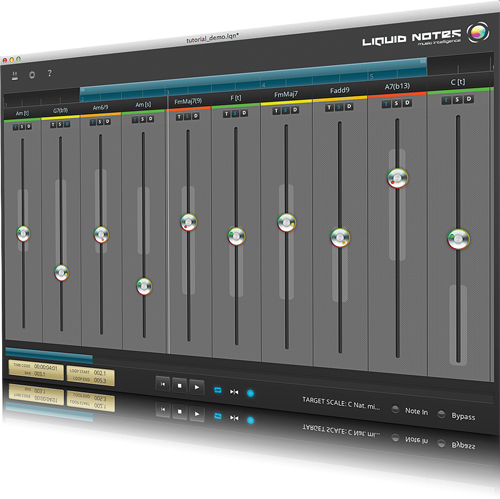Re-Compose Liquid Notes Review
Creative stagnation is experienced by all of us at one time or another. Everything we write sounds similar – not necessarily bad, just dull. The reasons behind it vary from person to person, but it’s usually a result of travelling down well-worn musical paths that we are comfortable with – phrases, licks and chord sequences […]

Creative stagnation is experienced by all of us at one time or another. Everything we write sounds similar – not necessarily bad, just dull. The reasons behind it vary from person to person, but it’s usually a result of travelling down well-worn musical paths that we are comfortable with – phrases, licks and chord sequences that fall under the fingers. The remedy is some out-of-the-box thinking to freshen up our ideas and spice up the ingredients.

Price £139
Contact Best Service +49 (0) 89 45 22 89 224
Web www.re-compose.com
Minimum system requirements
PC Windows XP/Mac OSX 10.6
Liquid Notes does exactly that by analysing harmonies, substituting chords, altering their function, adding tension, building progressions and delivering suggestions. It works on all platforms and can be used standalone with its own built-in synth or in conjunction with a DAW and external virtual instruments.
Hearing Aids
All work in Liquid Notes takes place in the realm of MIDI. MIDI files from a DAW or sequencer are first imported into Liquid Notes, where they undergo a process of harmonic analysis. For this to work correctly a composition must contain a harmony track. That might be a piano or guitar track or a specially prepared chord track.
The interface is minimal and all editing takes place in a single window consisting of a series of vertical sliders (controllers) on a timeline. From left to right these controllers represent the chord changes heard throughout the piece. New chords are obtained by sliding the controllers vertically upwards. The higher they go, the more unconventional the substitute chord becomes. A transport bar completes an otherwise minimalist interface – no notation and no piano-roll or other visual distractions. Upon listening to the playback, decisions and changes are made according to what you hear, not what you see.
Musical Playground
We’re always dubious of any software that claims to help with composition and didn’t initially regard Liquid Notes any differently. However, we warmed to it very quickly. It’s simple to use and, quite honestly, a lot of fun. One of the demo videos likened it to a musical playground and it’s an accurate analogy. It’s not perfect, and the constant exporting/importing of MIDI files and configuring settings becomes tedious after a while. Neither can it handle complex music structures, like classical counterpoint and so on. That said, it’s an excellent tool for writing electronic music such as house and trance as well as other popular styles.
Verdict
+ Fun to use
+ Great inspirational tool
+ Good for electro styles
– Not suitable for complex styles
– MIDI settings long-winded
– Latency with built-in synth
When you’re stuck for ideas, Liquid Notes will get you moving and help you complete your composition. Great fun to use and well suited to electronic pop of all kinds.
7/10


